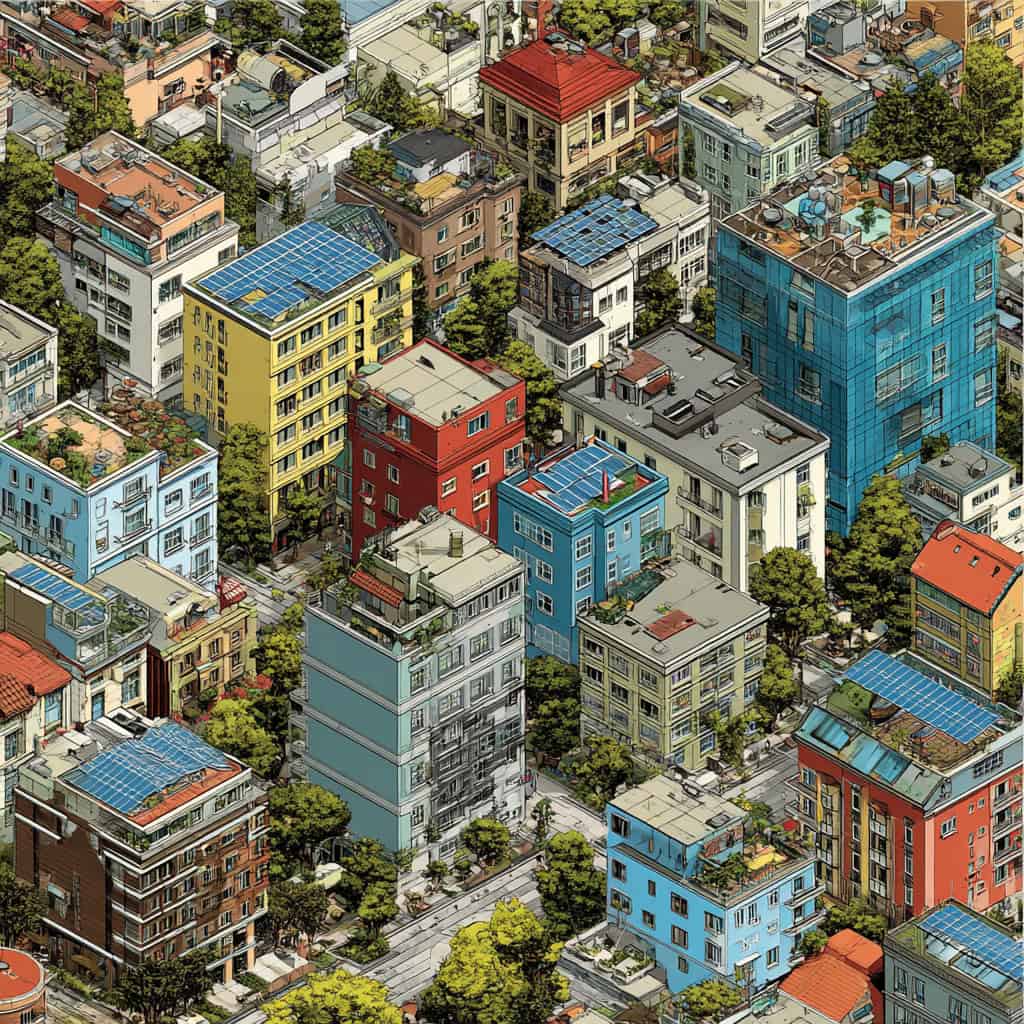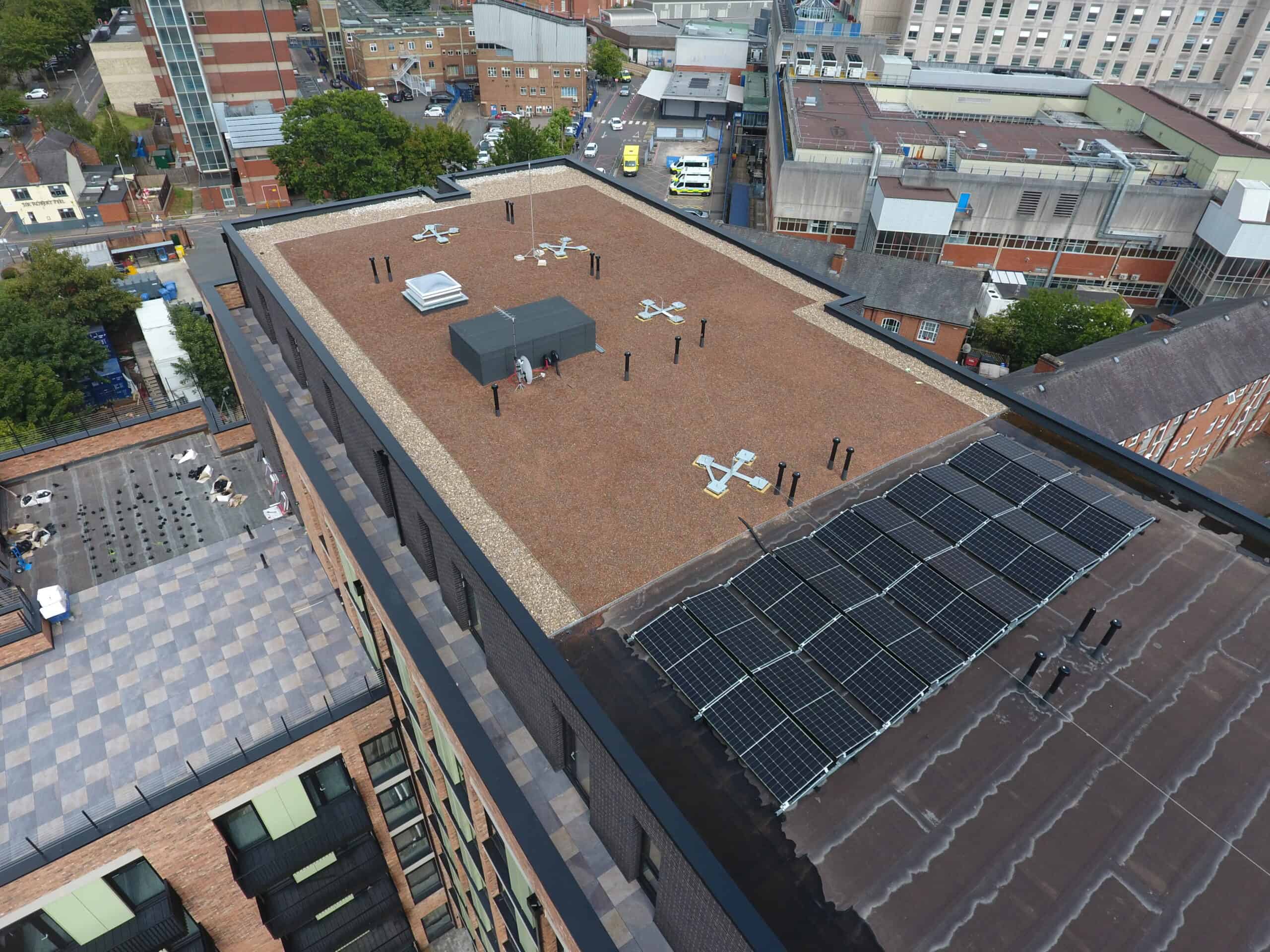With more than half the world’s population now residing in urban areas, a figure projected to rise significantly in the coming decades, cities face mounting pressure to manage energy demand, reduce carbon emissions, and provide a high quality of life.
Smart cities have become a new way to tackle these challenges. They use data, technology, and sustainable design together.
Among the various technologies driving this shift, solar energy stands out as a critical pillar. Solar power is a clean, renewable, and affordable energy source. It helps places reduce carbon emissions in their infrastructure. It also supports decentralised power systems and promotes economic and environmental resilience.

The Evolution Of Solar Technology In Urban Planning
The evolution of solar technology has mirrored the changing needs of urban environments. In the early stages, solar panels were primarily used in remote or rural settings, but rapid advances in efficiency, cost reduction, and design flexibility have made solar a viable option even in dense cityscapes.
Modern smart cities are moving beyond traditional rooftop PV systems to embrace innovative formats like:
- Building-Integrated Photovoltaics (BIPV) are solar materials that also serve as structural parts. These include glass windows, façade tiles, and even pavement.
- Floating Solar Farms: Ideal for water-scarce urban areas or cities with large reservoirs and industrial ponds.
- Vertical Solar Installations: Designed for high-rise buildings and compact urban spaces.
These technologies are enabling cities to generate more clean power without compromising valuable real estate.
Solar Power & The Smart Grid Ecosystem
In a smart city, energy infrastructure must be as intelligent as it is efficient. The integration of solar power into smart grids is a game-changer, offering real-time data exchange, adaptive load balancing, and enhanced grid reliability.
Key components include:
- Smart Meters and Sensors: Enable real-time monitoring of energy production and consumption, allowing utilities and users to optimise usage patterns.
- Demand Response Systems: Adjust energy consumption based on supply availability, a crucial function in solar-powered grids affected by time-of-day or weather.
- Battery Storage and Micro grids: Localised grids powered by solar and supported by battery storage provide autonomy and resilience, especially critical during natural disasters or grid outages.
These systems improve efficiency. They also help citizens and businesses become prosumers, making and using their own energy.
Solar-Powered Urban Infrastructure
Solar integration isn’t limited to buildings. Cities are incorporating solar into public infrastructure to reduce operational costs and lower emissions across various sectors:
Transportation & Mobility
- Solar-Powered EV Charging Stations: Located in public parking lots, shopping centres, and along major roads, these reduce pressure on the grid and support the growth of electric vehicle use.
- Solar-Powered Mass Transit: Buses and trains supported by solar-equipped depots and terminals enhance transit sustainability.
- Smart Traffic Systems: Solar-powered traffic lights and pedestrian signals contribute to safer, energy-efficient mobility.
Street Lighting & Public Safety
- Solar-powered LED streetlights are being adopted globally for their low maintenance, reliability during blackouts, and minimal carbon footprint. These systems often integrate sensors and cameras, forming part of a larger urban security network.
Waste & Water Management
- Solar panels are being used to power water treatment plants, recycling centres, and even smart waste bins that compact trash and notify collection teams when full, reducing unnecessary collection routes and emissions.
Overcoming Challenges To Solar Integration
Despite the promise of solar energy, several challenges must be addressed to ensure effective integration into smart cities:
- Initial Capital Costs: Although solar has become more affordable, installation and storage systems still require significant investment.
- Urban Design Constraints: Space limitations, shading from buildings, and aesthetic concerns can limit large-scale deployment.
- Policy and Regulation: Inconsistent permitting processes and lack of incentives may slow adoption. Coordination between local governments, utilities, and private stakeholders is essential.
- Maintenance and Lifecycle Management: Smart solar systems require ongoing monitoring and maintenance, which must be integrated into city operations and budgets.
Solutions include third-party financing models like Power Purchase Agreements (PPAs), tax incentives, public-private partnerships, and streamlined approval processes for residential and commercial solar projects.

The Broader Impact: Environmental, Social, & Economic Benefits
Smart cities powered by solar energy aren’t just greener, they’re also more equitable and resilient:
- Climate Action: Reducing greenhouse gas emissions helps cities meet global climate targets such as those set in the Paris Agreement.
- Public Health: Cleaner air and reduced urban heat island effects improve public health outcomes.
- Economic Development: Local solar jobs, new business models (e.g., peer-to-peer energy trading), and lower energy bills support economic inclusion and energy democracy.
- Disaster Preparedness: Distributed solar energy systems paired with battery storage improve energy security during climate-induced emergencies.
Conclusion: Designing A Solar-Powered Urban Future
The successful integration of solar energy in smart cities represents more than just a technical achievement, it reflects a deeper commitment to reimagining urban life in balance with the planet.
As cities around the world grapple with unprecedented environmental and demographic pressures, solar energy offers a blueprint not just for sustainable energy, but for a holistic model of urban living.
Future smart cities will likely be defined by their ability to generate their own clean energy, manage it intelligently, and distribute it equitably creating environments that are liveable, resilient, and inclusive. Solar energy is the cornerstone of that vision.

